
Blending Wood Tones
While trends come and go, blending wood tones has long been a beloved design choice that stands the test of time. The specific wood tones and finishes may vary with each era, but the overall concept of combining different woods remains a timeless design element.
In this guide, we’ll explore how to masterfully blend wood finishes like a pro, offering fresh insights to inspire your next decor project.
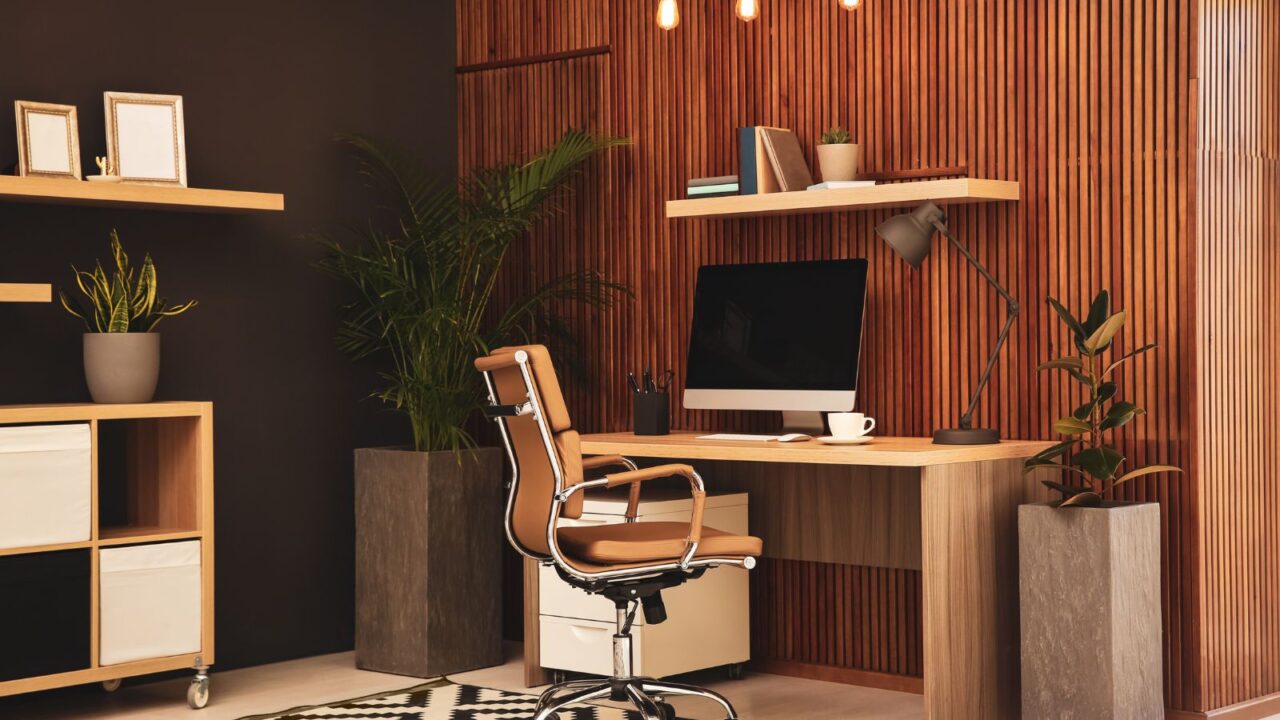
Start with Your Primary Wood Tone
Start with identifying your dominant wood tone for a well-balanced room. This often comes from key pieces like furniture, floors, cabinets, or a statement item.
Establishing a primary wood tone makes it easier to layer additional wood finishes without creating a disjointed look. After all, harmonious space starts with cohesion in the larger elements.
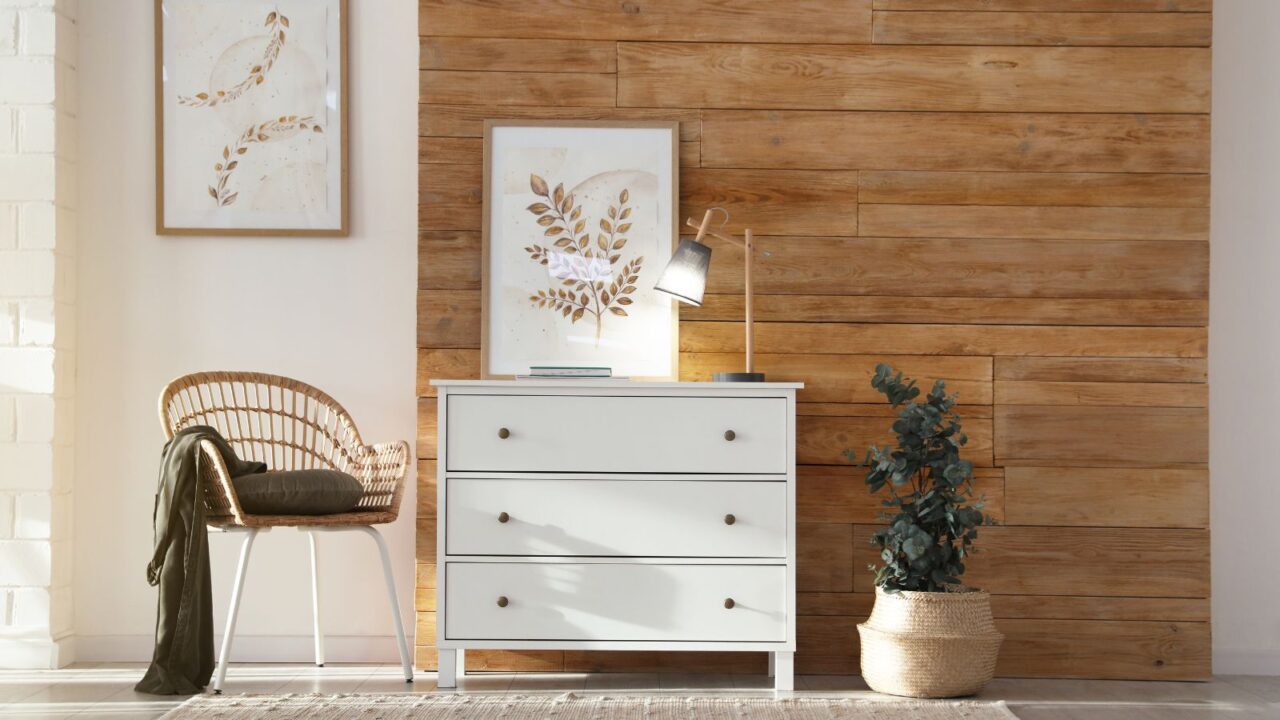
Consider the Undertones
Once you set the foundation by identifying a primary wood tone, it’s time to explore its undertones.
Warm woods, such as cherry or walnut, pair seamlessly with other warm-toned woods, creating a maximalist and traditional design aesthetic. Meanwhile, cool-toned woods, like those with gray or ash finishes, work better in modern or minimalist settings.
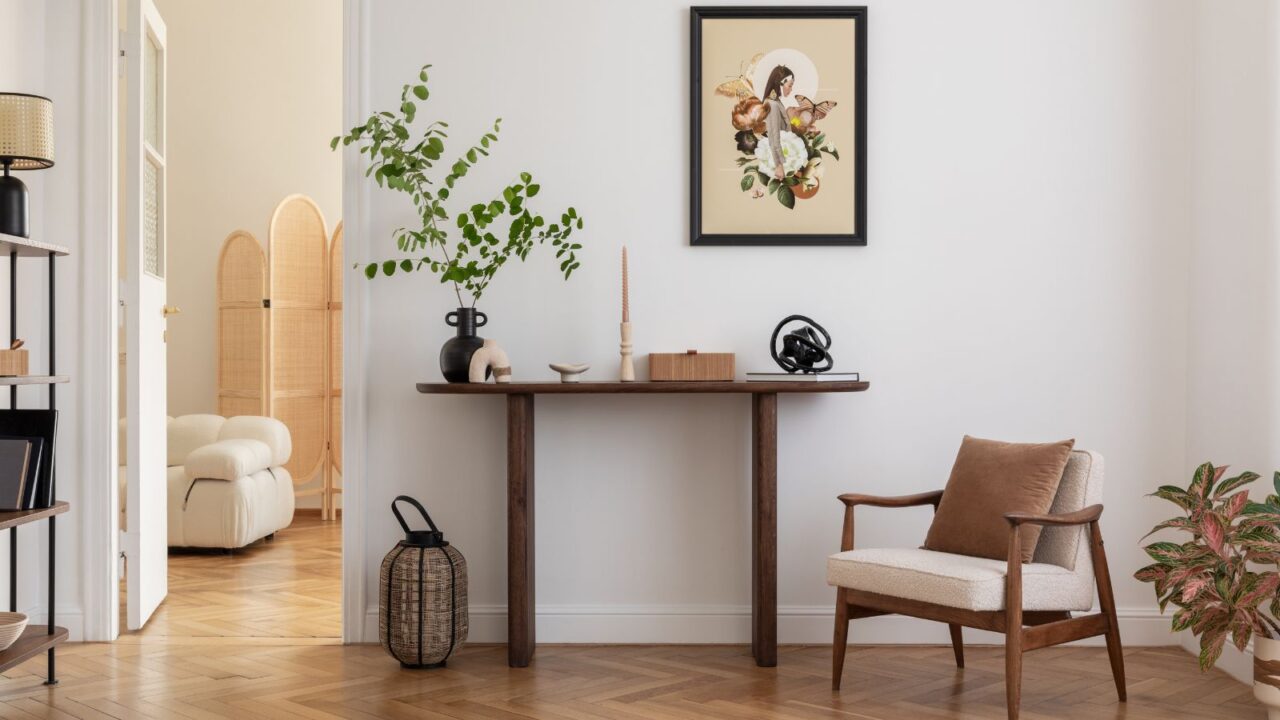
Add Contrast for Dimension
Mixing light and dark wood finishes adds depth and dimension to a room. For instance, create visual interest by pairing light-colored oak with darker woods, like walnut.
Such a combination brings sophistication and a dynamic feel to the space.
However, avoid overloading the room with too many contrasting tones. Limit the contrast to two dominant wood shades.
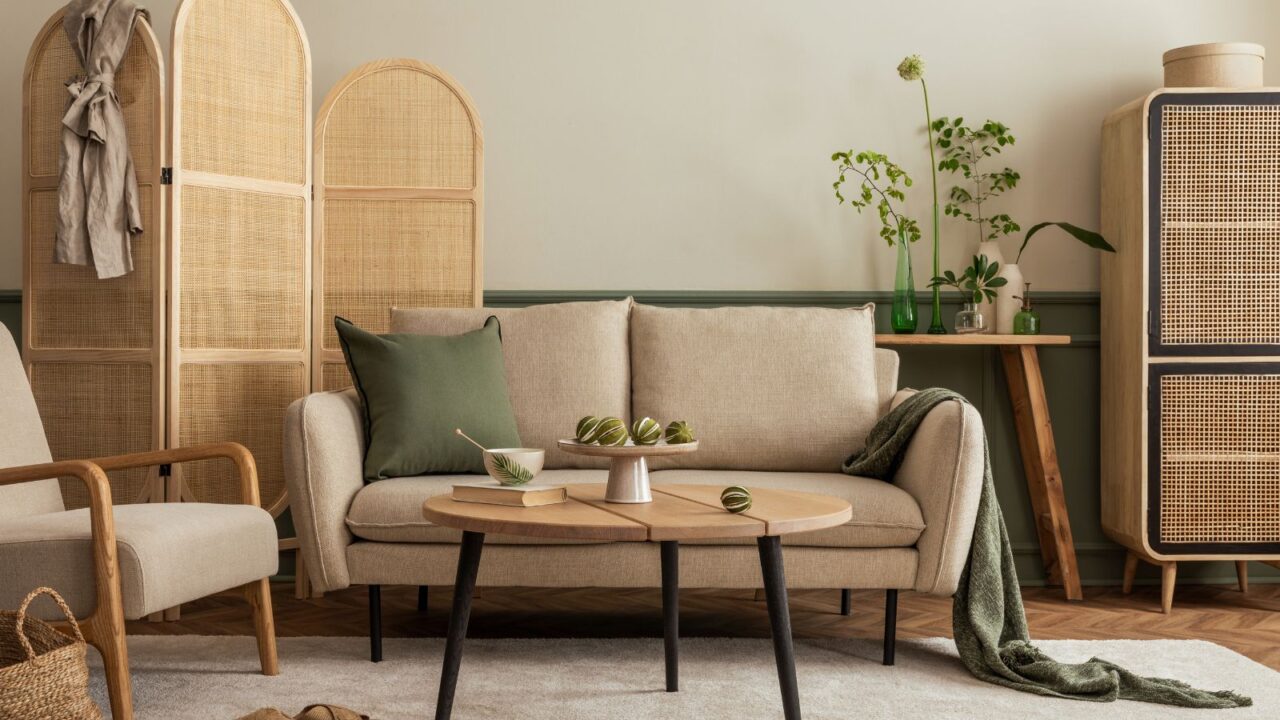
Balance Throughout the Space
The key to mixing wood finishes as a pro lies in creating harmony across the room. Distribute wood tones throughout rather than clustering them in one area.
Repeat a wood tone in shelving, picture frames, and decor pieces to maintain balance. For example, if you have a cherry wood dining table, opt for cherry decor frames to tie the elements together.
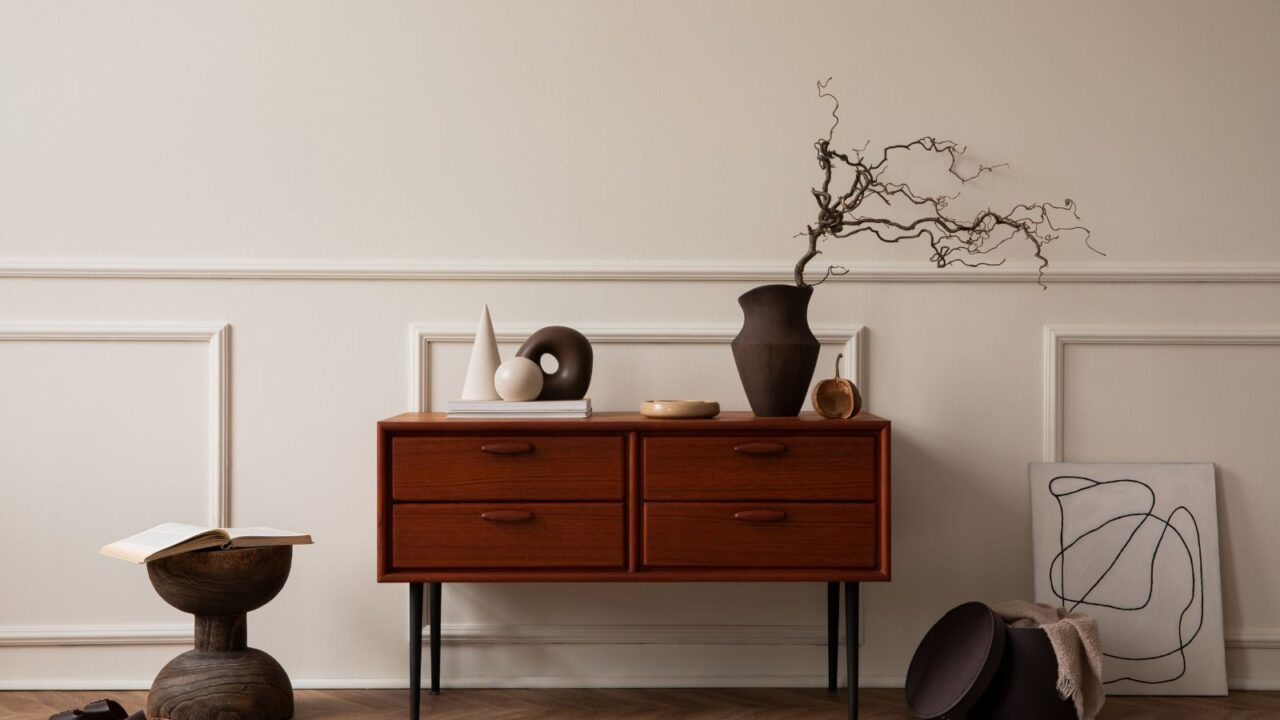
Blend Different Finishes
Wood tones aren’t the only element to consider. Finishes also play a significant role in achieving harmony. For instance, combining matte with glossy or natural with lacquered wood adds more texture and interest.
Pair a polished walnut table with matte oak chairs to create a visually stimulating contrast. Mixing finishes introduces variety while maintaining a cohesive aesthetic.
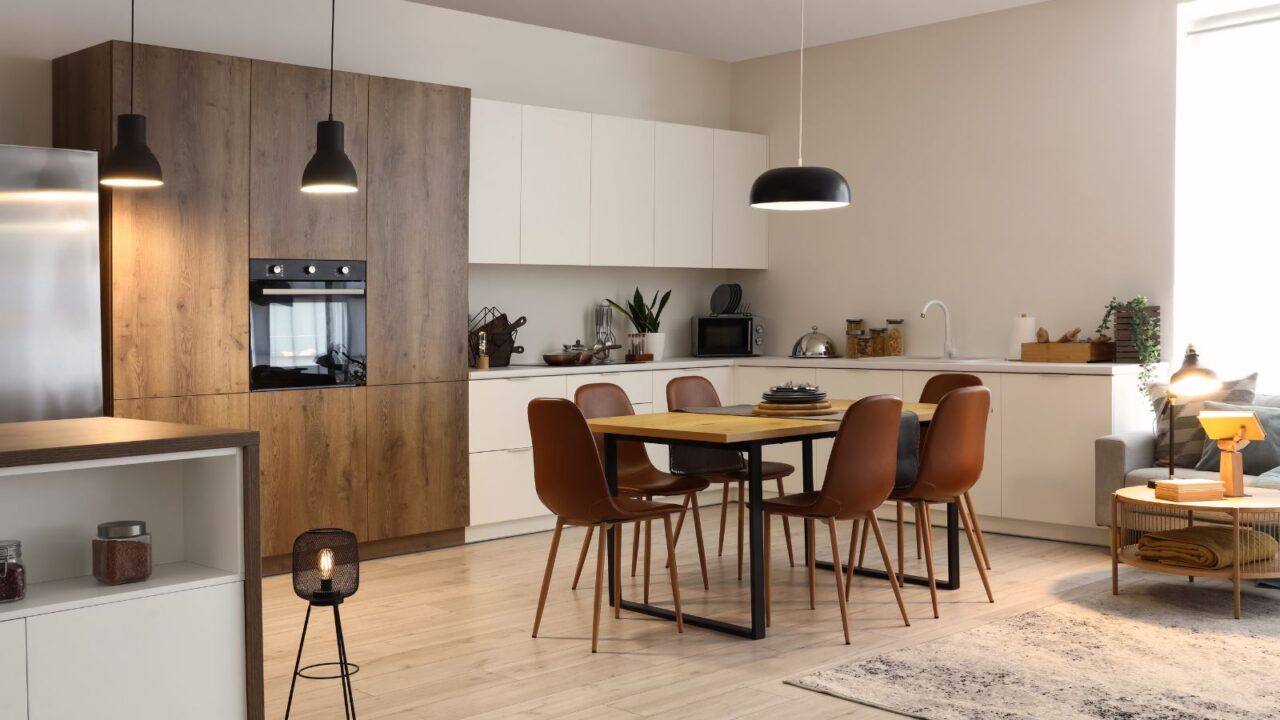
Introduce Wood Through Key Pieces
Start adding wood with foundational elements like furniture or flooring. The large elements will introduce the base that sets the tone for the rest of your design.
For instance, a sturdy walnut coffee table, oak console tables, or cherry wood flooring can become the base that guides your wood palette. Gradually expand the wood tones throughout the room.
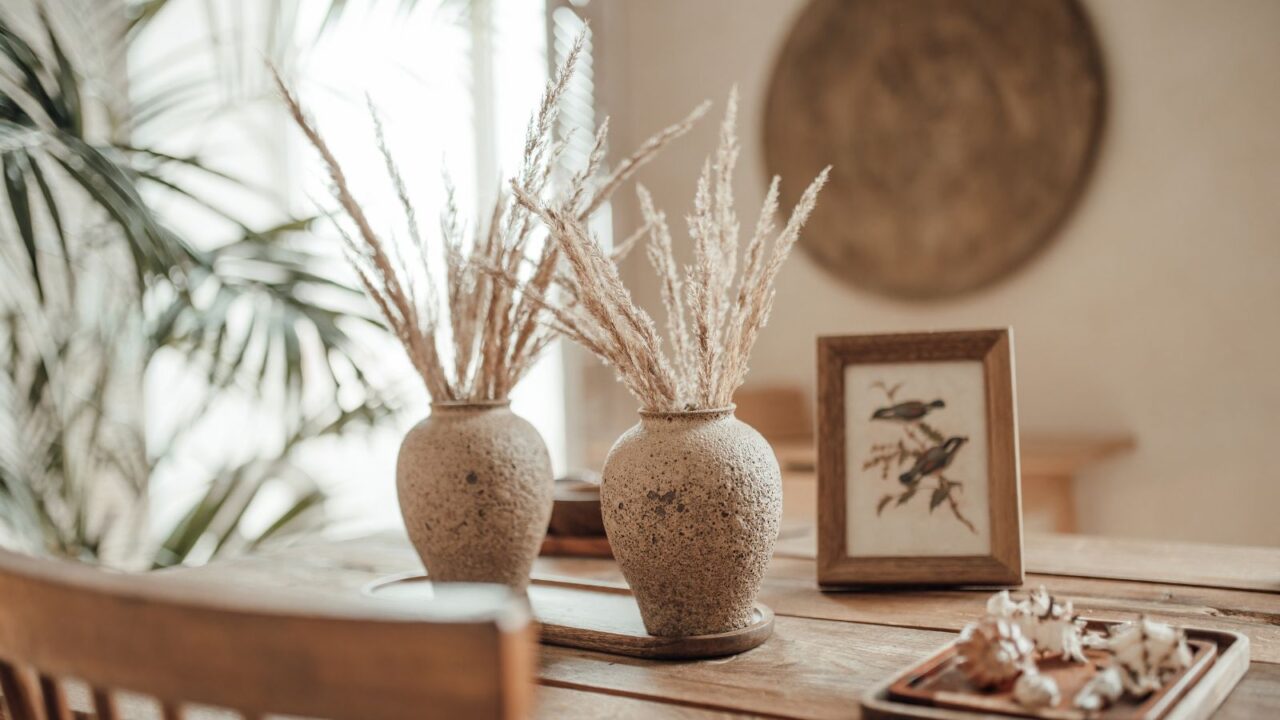
Incorporate Wood Accents in Unexpected Places
Don’t keep the wood limited to furniture and flooring. Expanding wood accents into areas like lighting fixtures, wall art, or mantel decor ties the design together. Instead of standard tiles or paint, use reclaimed wood for a backsplash or as a decorative border around the countertops.
These subtle additions reinforce your wood palette without overwhelming the room. Balance light and dark wood accents to prevent a monotonous look.
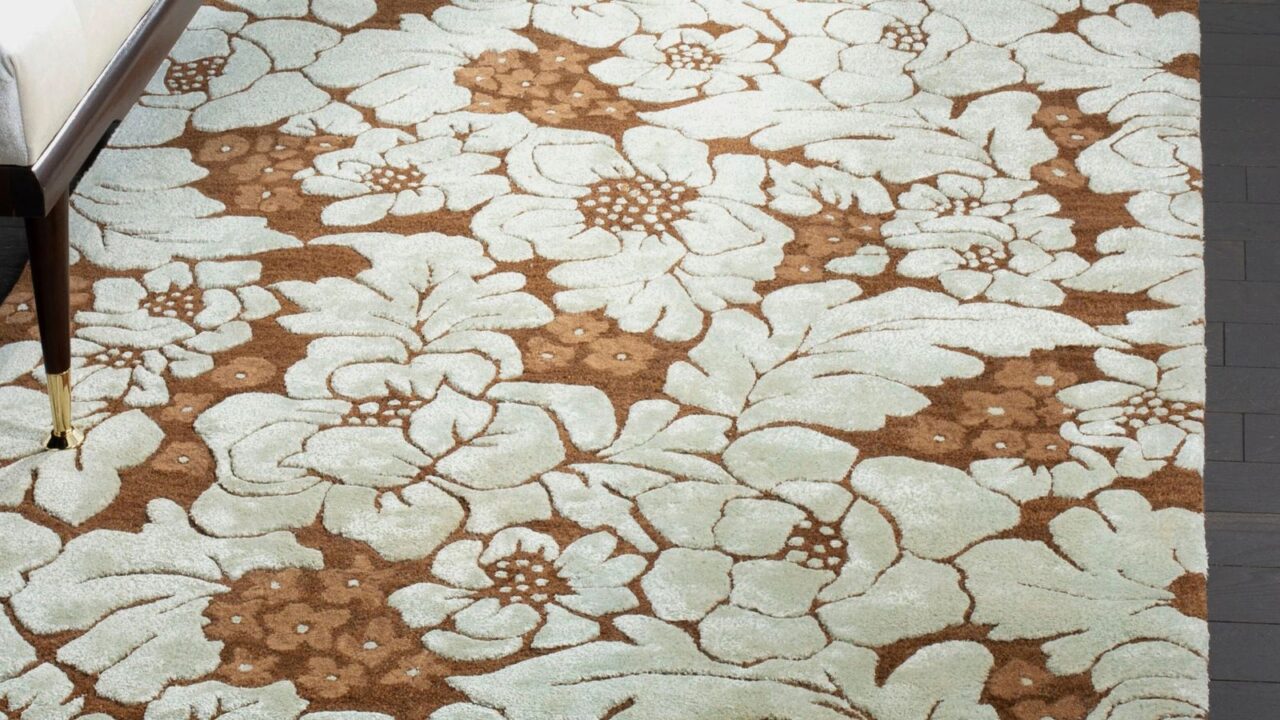
Use Area Rugs to Anchor Wood Tones
Even after balancing, you feel the space has a lot of matching wood tones, add a textured or colorful rug to break up the monotony.
Rugs create sections in your space, giving each wood tone room to breathe. This trick softens any sharp competing wood tones, ensuring that your room maintains a calming, cohesive vibe.

Lean into a Dominant Color Story
Create unity by sticking to a consistent wood-color family. For example, a variety of dark wood finishes like espresso and walnut can create a rich, cohesive space. Combining white oak with walnut, for example, maintains depth without overwhelming the eye.
This curated approach allows for variety within a single color scheme, adding depth while maintaining a polished look.

Let Natural Lighting Guide You
Harnessing natural light is a game-changer in how well the wood blends into your space. Position larger wood elements, such as furniture, near the window.
Opt for lighter woods, like maple or ash, in areas flooded with sunlight. The interplay between light and wood enhances the natural grain and color of the wood.
This balance of natural lighting and wood will create a serene, inviting space that feels both open and grounded.
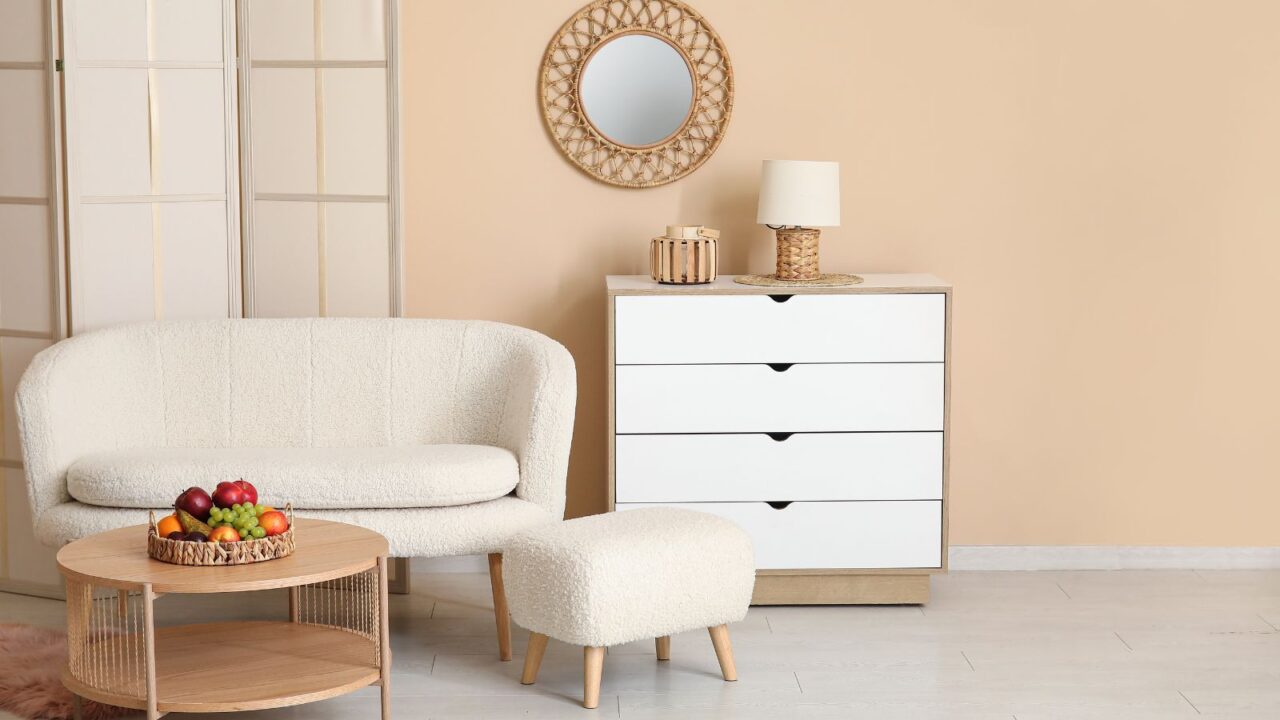
Add Texture with Rattan, Cane, and Wicker
Consider using textural elements like rattan, cane, or wicker to further increase the wood accent depth. These materials add dimension and interest to the room while complementing other wood tones.
Incorporate these elements into accent chairs, tables, or decor pieces to introduce variety and warmth without overwhelming your space.

Vary Shapes and Sizes
One trick that works best for homeowners to create designer wood blends is using different shapes and sizes. The technique not only increases the visual appeal but also adds texture and a modern touch to your space.
For instance, pair a large wooden dining table with smaller wooden chairs or stools. Or combine different styles of furniture, such as modern to rustic for a more eclectic look.

Add Character with Vintage Wood Pieces
Adding vintage wooden pieces further brings charm and character to a space. To avoid making vintage pieces feel out of place, pair them with similar wood tones throughout the room.
The best approach is to stay within a similar tonal range for cohesion. This creates a cohesive, polished look that lets the vintage items shine without clashing with the rest of your design.
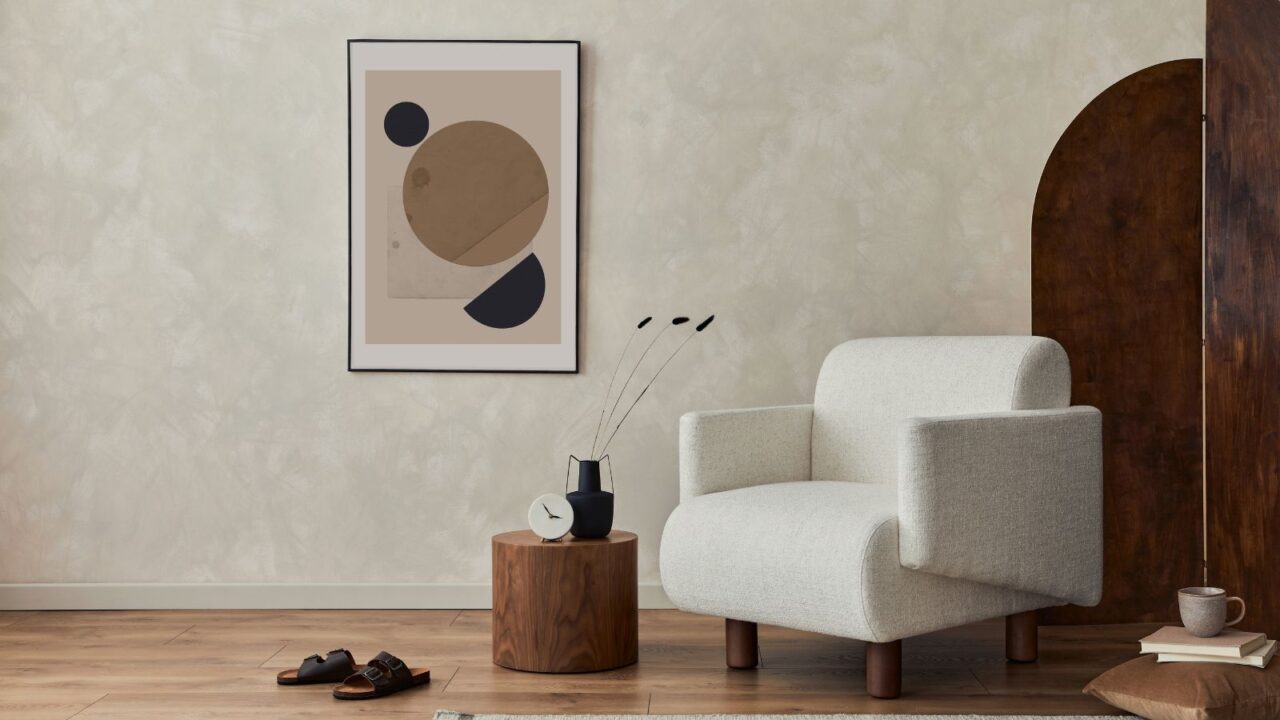
Color Combinations for Mixing Wood Finishes Like a Pro
The right mix of woods with the right colors can elevate your home’s design. After all, no matter how well you blend woods, the wrong colors can drastically undermine the overall aesthetic of a space.
Here are some ideas to incorporate the right color according to your wood accents:
- Walnut + White Oak + Neutral Greys
- Espresso + Blonde Wood + Cool Blues
- Cherry + Mahogany + Warm Whites
- Ash + Teak + Earthy Greens
- Dark Walnut + Driftwood + Soft Pink
To ensure your interior design remains both timeless and trendy, check out Top Color Trends for 2025. Choose a color scheme that perfectly complements your wooden elements.

Warm Up Fall with Wood Trends
Create the perfect fall atmosphere using wood throughout your interior this fall. From rustic oak dining tables, slat walls, walnut coffee tables, cedar plank ceilings, weathered wood accent walls, and reclaimed wood shelving, you have multiple options to choose from.
This piece on Warm Up Fall with These 15 Wood Trends offers a variety of styles and finish ideas to suit different interior design preferences.